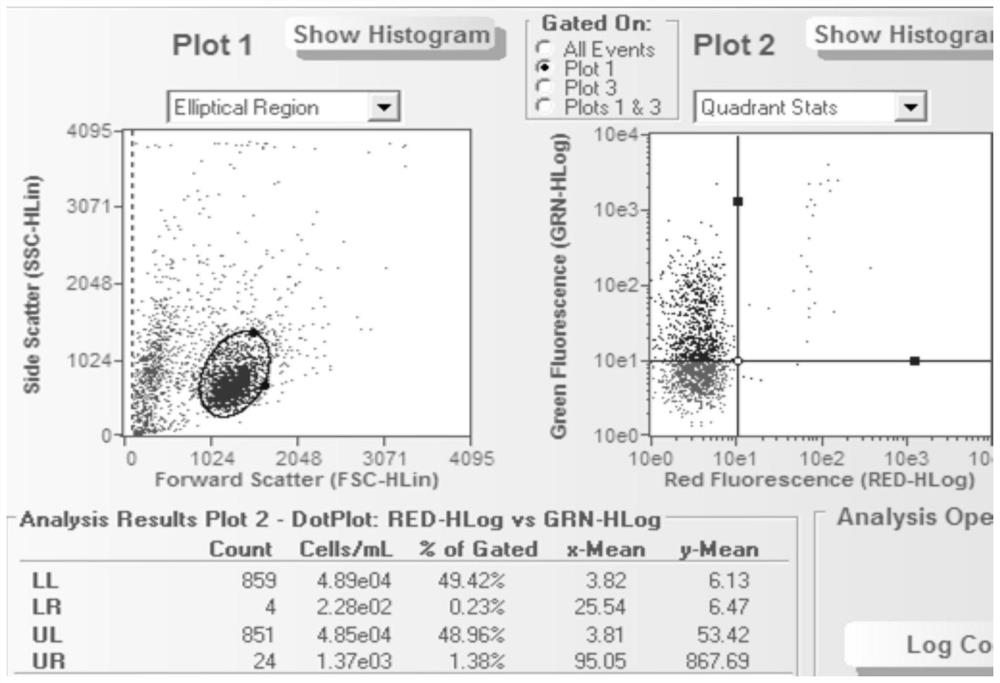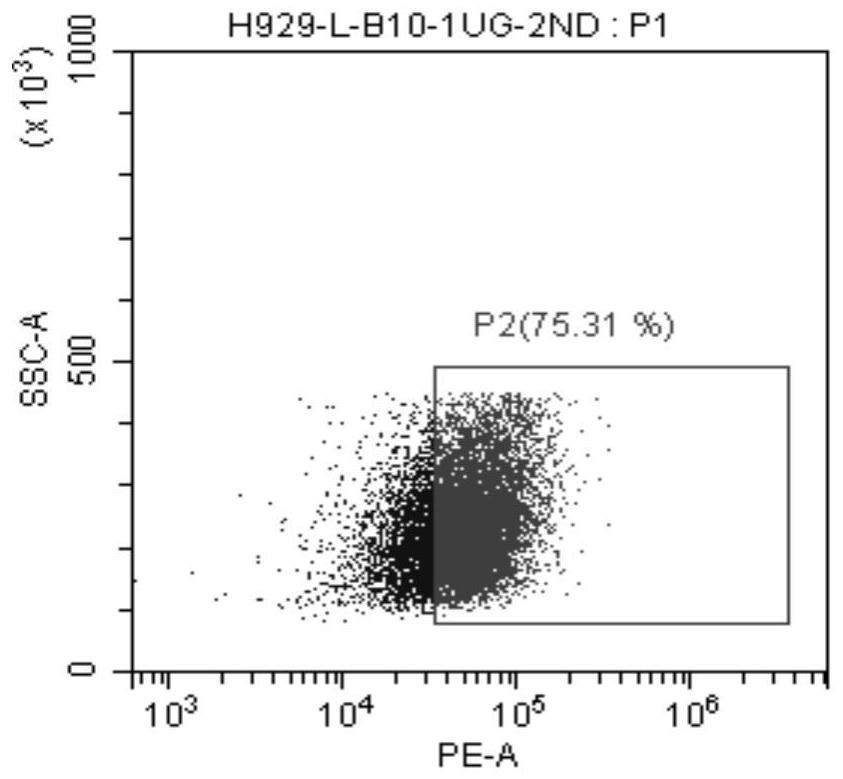Preparation method and application of BCMA antibody
An antibody and identity technology, applied in the field of preparation and application of BCMA antibodies, can solve the problems that stem cell transplantation is not suitable for patients and rarely achieve complete remission.
- Summary
- Abstract
- Description
- Claims
- Application Information
AI Technical Summary
Problems solved by technology
Method used
Image
Examples
Embodiment 1
[0065] Example 1 Screening of anti-human BCMA antibody from natural human antibody phage surface display library
[0066] Antibody library technology is a method of cloning all antibody variable region genes of a certain animal (including humans) into plasmids or phages. After the latter infects E. coli, antibody fragments are expressed on the surface of phage particles, or the periplasm of E. coli, including in the pulp. Then use the target antigen to screen the clones carrying specific antibody genes from the antibody library, so as to obtain the corresponding specific antibody technology. Various antibodies needed in basic research and clinical development have been screened from the antibody library, such as tumor-associated membrane protein antigens, autoantigens related to autoimmune diseases, and antibodies against viral antigens of viral diseases. These show the great application potential of antibody library technology in basic research and antibody drug development....
Embodiment 2
[0072] Example 2 Antibody function verification
[0073] In order to verify whether the obtained BCMA antibody clone binds to the purified BCMA antigen and BCMA expressed on the cell membrane surface, the gene of the B10 single-chain antibody was cloned into the eukaryotic expression vector pFH (manufactured by Ekest) to obtain the plasmid pFH-B10. In this vector, the scFv gene is fused with the Fc gene of human IgG4 to express the protein in the form of scFv-Fc, which can be affinity purified with Potein-A or labeled with (HRP or fluorescein) anti-human Fc antibody detection.
[0074] After obtaining the scFv-Fc protein of B10, the binding of this antibody to BCMA was detected by Octet RED, which confirmed the specific binding of B10 to BCMA.
[0075] B10 was detected by flow cytometry on the BCMA-expressing cell line H929 (NCI-H929, CRL-9068 TM ), indicating that B10 specifically binds to the BCMA antigen on the cell membrane surface (see figure 1 ). In this FACS anal...
Embodiment 3
[0076] Example 3 Antibody affinity maturation
[0077] Antibody affinity refers to the interaction strength between an antibody and its specific antigen, more precisely, the binding strength between the antibody and its corresponding antigenic determinant (or epitope) on the specific antigen. This interaction is non-covalent in nature, and the antibody-antigen is tightly bound by hydrogen bonds, hydrophobic forces, ionic bonds or / and Van der Waals forces by direct contact of amino acids at some positions on both sides of the antibody-antigen to form an antibody-antigen Antigen complex. Affinity in the strict sense (also known as intrinsic affinity, KD) refers to the strength of antibody-antigen 1:1 monovalent binding, such as antigen-binding fragment (Fab) or single-chain antibody (scFv) to monomeric antigen Interaction. Due to the Y-shaped symmetrical structure of the classical antibody, the binding strength exhibited when the antibody recognizes and binds to the correspond...
PUM
| Property | Measurement | Unit |
|---|---|---|
| affinity | aaaaa | aaaaa |
Abstract
Description
Claims
Application Information
 Login to View More
Login to View More - R&D Engineer
- R&D Manager
- IP Professional
- Industry Leading Data Capabilities
- Powerful AI technology
- Patent DNA Extraction
Browse by: Latest US Patents, China's latest patents, Technical Efficacy Thesaurus, Application Domain, Technology Topic, Popular Technical Reports.
© 2024 PatSnap. All rights reserved.Legal|Privacy policy|Modern Slavery Act Transparency Statement|Sitemap|About US| Contact US: help@patsnap.com










